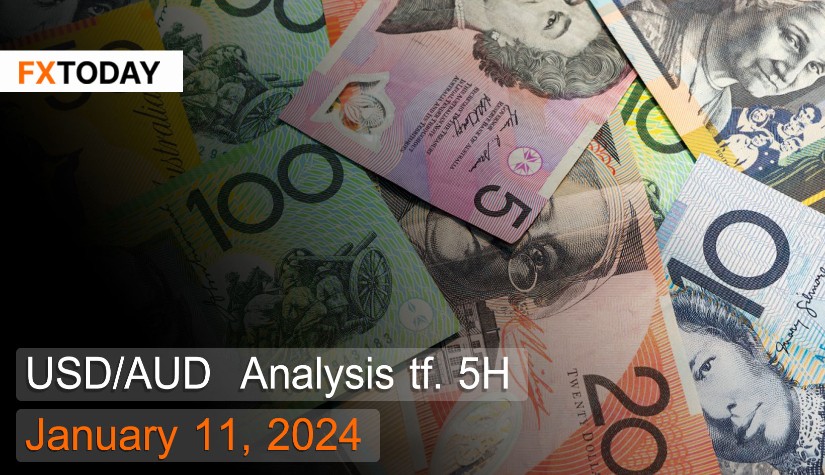The Australian economy is showing signs of improvement.
The Australian dollar slightly depreciated against the US dollar since the beginning of the year to a level of 1.49 Australian dollars per US dollar. While this may indicate a slowing inflationary trend, investors predict that the Reserve Bank of Australia (RBA) may not need to raise interest rates further. Additionally, there are expectations that the RBA may reduce interest rates by approximately 36% in May, aligning with similar moves by the Federal Reserve.
Australia's inflation rate increased by 4.3% month-on-month in November, a slight decrease from 4.9% in October. This was influenced by various industries, including a slowdown in food prices by 4.6% and a 3.6% reduction in energy prices. However, housing prices saw a slight increase of 6.6%, mainly driven by higher rental costs, and the inflation rate remains above the RBA's target range of 2-3%.
Retail trade in Australia rose by 2.0% month-on-month in November, marking the strongest retail performance since 2021. This growth was predominantly driven by the Black Friday events, with significant increases in household goods retail trade by 7.5%, and clothing, footwear, and accessories by 2.7%. Food retail trade continued to show consistent growth at 0.4%.
Household spending in Australia increased to 298.71 billion Australian dollars in the third quarter of 2023, compared to 298.63 billion in the second quarter of the same year. Consumer spending has been steadily rising since 1959.
However, the household savings rate in Australia decreased to 1.10% in the third quarter of 2022, down from 2.80% in the second quarter of the same year. On an individual basis, the average personal savings rate increased to 9.39%, as higher interest rates led to delayed high-value asset purchases.
The yield on Australia's 10-year government bonds decreased to 4.1%, following a trend similar to the reduction in yields on US government bonds. This comes amid expectations that the US Federal Reserve may slightly reduce interest rates this year. The slightly improved economic data in Australia is also contributing to the decline in government bond yields.
Techical analysis data (5H)
Resistance: 1.4930, 1.4965, 1.4995
Source: Investing.com
Buy/Long 1: If the price touches support in the price range of 1.4835 - 1.4865 but cannot break the support at 1.4865, you may set a TP at approximately 1.4965 and SL at around 1.4800 or according to your acceptable risk.
Buy/Long 2: If the price breaks the resistance in the price range of 1.4930 - 1.4965, you may set a TP at approximately 1.4995 and SL at around 1.4835 or according to your acceptable risk.
Sell/Short 1: If the price touches resistance in the price range of 1.4930 - 1.4965 but cannot break the resistance at 1.4930, you may set a TP at approximately 1.4835 and SL at around 1.4995 or according to your acceptable risk.
Sell/Short 2: If the price breaks the support in the price range of 1.4835 - 1.4865, you may set a TP at approximately 1.4800 and SL at around 1.4965 or according to your acceptable risk.
Pivot point January 11, 2024 01:12 PM. GMT+7
| Name | S3 | S2 | S1 | Pivot Points | R1 | R2 | R3 |
| Classic | 1.4800 | 1.4835 | 1.4865 | 1.4900 | 1.4930 | 1.4965 | 1.4995 |
| Fibonacci | 1.4835 | 1.4860 | 1.4875 | 1.4900 | 1.4925 | 1.4940 | 1.4965 |
| Camarilla | 1.4876 | 1.4882 | 1.4888 | 1.4900 | 1.4900 | 1.4906 | 1.4912 |
| Woodie's | 1.4796 | 1.4833 | 1.4861 | 1.4898 | 1.4926 | 1.4963 | 1.4991 |
| DeMark's | - | - | 1.4849 | 1.4892 | 1.4915 | - | - |
















